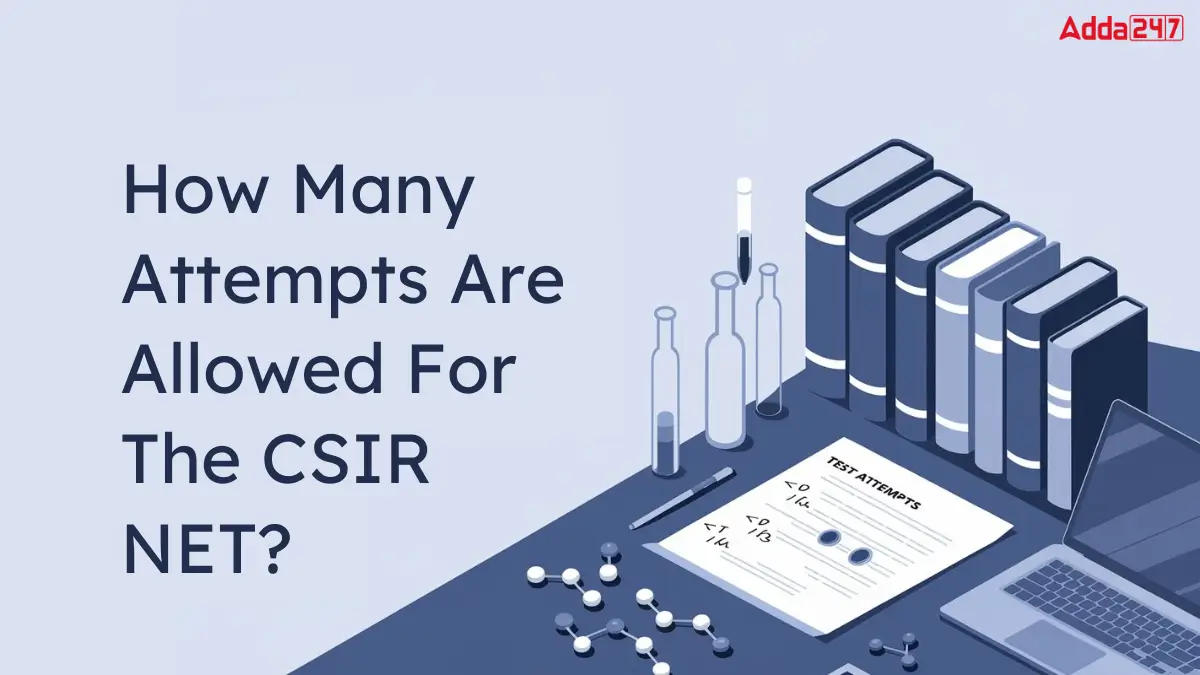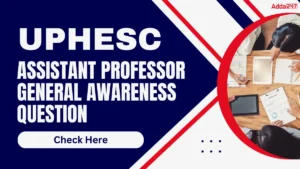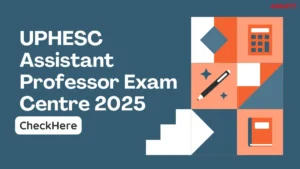Table of Contents
CSIR NET – The Council of Scientific and Industrial Research National Eligibility Test is a National-Level Exam conducted to provide eligibility to aspiring candidates to pursue their longing dream of a prestigious academic career in the Science domain. The candidate who manages to clear this National Eligibility Test conducted by the National Testing Agency gets the opportunity to become either an Assistant Professor, a Junior Research Fellow or a PhD Scholar. Being a challenging exam with so many candidates applying every session, this becomes so important for candidates to know how many attempts are allowed for the CSIR NET exam. Clarifying this concern, this article will clear all your doubts about attempts from every perspective.
How Many Attempts Are Allowed For The CSIR NET?
CSIR NET is an Eligibility Test that certifies the passing candidates to begin their academic career in the Science Domain. And as per the UGC guidelines, there is no limit to the number of times a candidate can apply and get the certification, However, there are some limiting factors that candidates must be aware of, such as the CSIR NET Eligibility Criteria and the age limitations which may limit the candidates to appear for the examinations if not fulfilled.
CSIR NET Eligibility Criteria and Age Limit
To ensure that only qualified and deserving candidates appear for the CSIR NET Exam, the National Testing Agency (NTA) has set specific eligibility criteria that every aspirant must meet. The eligibility requirements primarily focus on educational qualifications and age limits, varying based on whether the candidate is applying for a Junior Research Fellowship (JRF) or Assistant Professor. Meeting these eligibility criteria is crucial for aspirants aiming to qualify for the CSIR NET and secure a reputed academic position in the Science domain.
| Criteria | Junior Research Fellowship (JRF) | Assistant Professor |
| Educational Qualification | Master’s degree (M.Sc./integrated BS-MS/BS-4 years/B-Tech/B.Pharma/MBBS) in Science streams from a recognized university. | Same as JRF |
| Minimum Marks Required | 55% marks (General & OBC-NCL) | 55% marks (General & OBC-NCL) |
| Final-Year Students | Eligible but must meet criteria within two years of passing the exam. | Eligible but must meet criteria within two years of passing the exam. |
| Maximum Age Limit | 30 years as of 1st February 2025 | No upper age limit |
Is There a Limit on the Number of Attempts for CSIR NET?
One of the biggest advantages of the CSIR NET exam is that there is no official restriction on the number of attempts. Candidates can appear for the exam as many times as they wish, provided they meet the eligibility criteria. However, for those aiming for the Junior Research Fellowship (JRF), the only limiting factor is the age limit of 30 years. Once a candidate crosses this age, they can still apply for Assistant Professor eligibility, which has no upper age limit, allowing unlimited attempts.
Age Relaxation and Its Impact on Attempts
The age relaxation policy for CSIR NET plays a significant role in increasing the number of possible attempts for certain categories. While General category candidates can apply for JRF until 30 years, candidates from OBC-NCL, SC, ST, PwD, and female candidates get a relaxation of up to five additional years. This effectively extends their opportunity to attempt JRF until 35 years of age. However, for Assistant Professor, since there is no age limit, candidates from all categories can appear for the exam as many times as needed.
Strategies to Maximize Clearing the CSIR NET Exam
Although CSIR NET allows multiple attempts, it is best to clear it as soon as possible to advance in your academic career. Instead of relying on unlimited attempts, candidates should adopt high-impact strategies to qualify early. And implementing these techniques will help you crack CSIR NET faster than you ever imagined!
- The 80/20 Rule for Syllabus Mastery: Focus on 20% of high-weightage topics that contribute to 80% of the questions. Prioritize key topics over low-frequency ones.
- Reverse Learning Technique: Solve CSIR NET previous year papers first before diving into books. This way, you learn exactly what’s important and how questions are framed.
- The “Time-Block” Study Plan: Study in 90-minute deep-focus sessions, followed by a 20-minute revision. This enhances retention and prevents burnout.
- Smart Memory Triggers: Use visual mnemonics, diagrams, and mind maps to retain complex concepts quickly instead of long textbook readings.
- “Mock Test Simulation” Approach: Give full-length mock tests at the same time as the actual exam to train your brain for real-time problem-solving under pressure.
What Do the Candidates Who Clear CSIR NET but Not JRF Do?
Many candidates qualify for CSIR NET for Assistant Professor but do not make it to the JRF (Junior Research Fellowship) due to the higher cutoff marks required for JRF selection. Even if candidates miss JRF, qualifying for CSIR NET alone is a significant academic achievement that enhances career opportunities in research and teaching:
- They can apply for Assistant Professor positions in universities and colleges without any age restrictions.
- They become eligible for PhD admissions, as many institutes require CSIR NET qualification for research programs.
- They can appear for CSIR NET again to improve their scores and qualify for JRF in future attempts.
- They can apply for research assistant roles in national laboratories, R&D organizations, and private sector companies.
- They may qualify for PSU recruitments, as several Public Sector Undertakings (PSUs) accept CSIR NET scores for scientist and researcher positions.
| CSIR NET Exam Important Links | |
| CSIR NET Notification | CSIR NET Syllabus |
| CSIR NET Previous Year Paper | CSIR NET Eligibility |
| CSIR NET Preparation Tips | CSIR NET Cut-Off |
| CSIR NET Salary | CSIR NET Exam Centre |




 MP TET Varg 2 Exam Center List 2025, Dis...
MP TET Varg 2 Exam Center List 2025, Dis...
 UPHESC Assistant Professor General Aware...
UPHESC Assistant Professor General Aware...
 UPHESC Assistant Professor Exam Centre 2...
UPHESC Assistant Professor Exam Centre 2...




